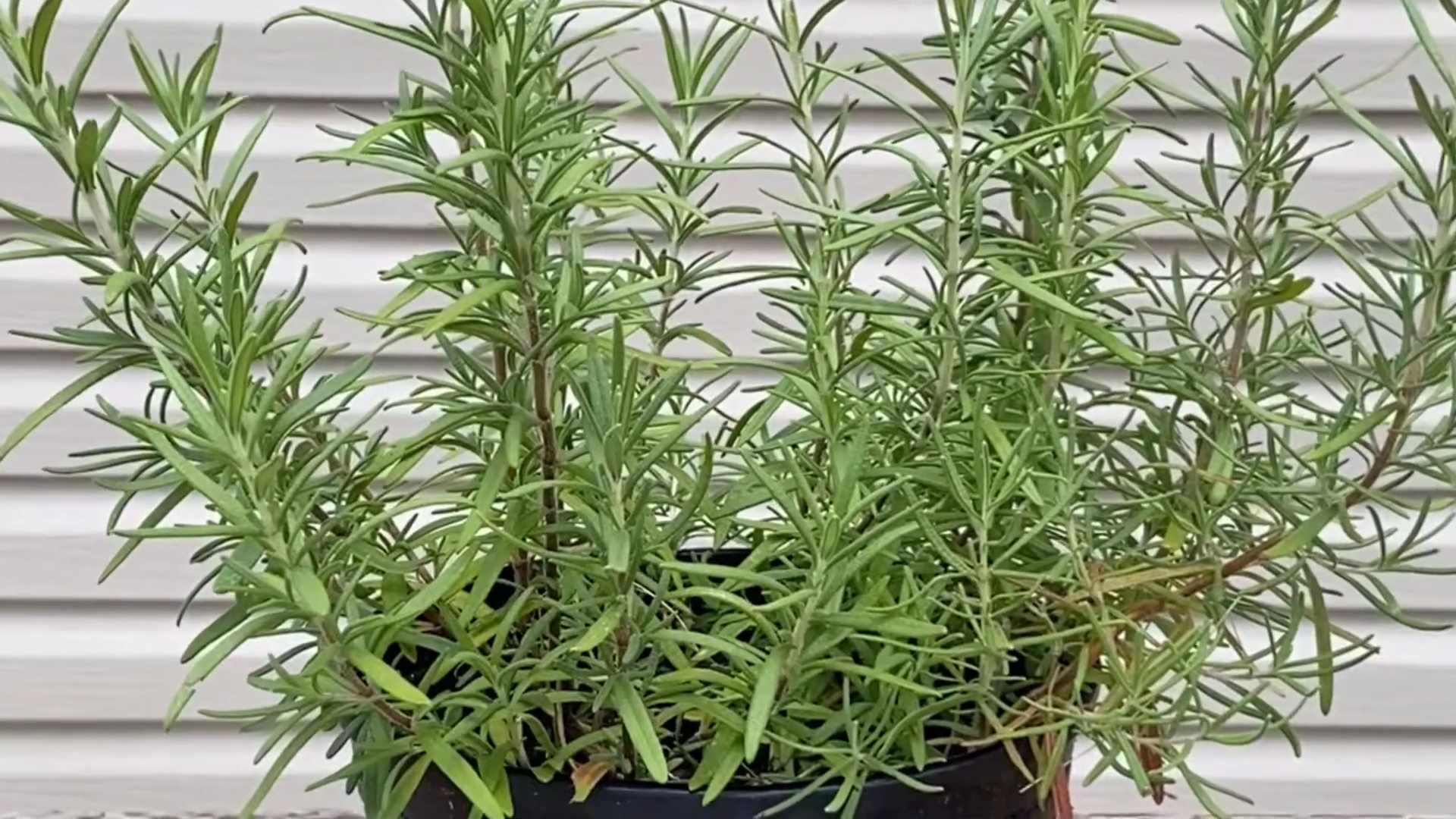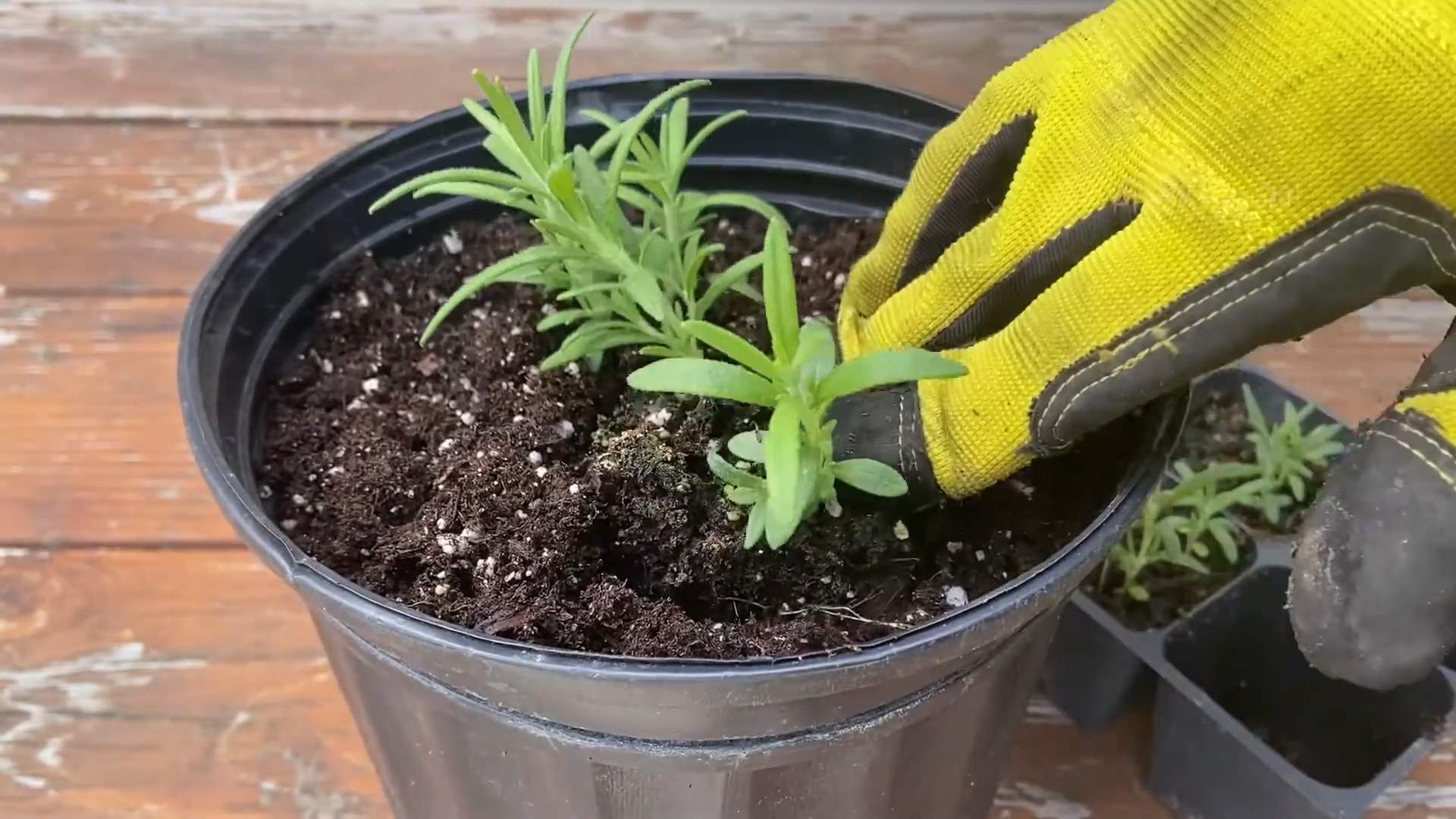Growing Rosemary Indoors can seem like a daunting task, conjuring images of sun-drenched Mediterranean hillsides far removed from your cozy apartment. But fear not, fellow plant enthusiasts! I’m here to tell you that cultivating this fragrant and flavorful herb within the comfort of your home is not only achievable but also incredibly rewarding.
Rosemary, revered since ancient times for its medicinal and culinary properties, has a rich history intertwined with symbolism and folklore. From being woven into wedding crowns to representing remembrance, this herb has always held a special place in human culture. But beyond its historical significance, why should *you* consider growing rosemary indoors? Well, imagine having fresh, aromatic rosemary readily available to elevate your culinary creations, infuse your home with a delightful scent, and even boost your well-being with its therapeutic properties.
In today’s fast-paced world, access to fresh herbs can be limited and expensive. That’s where the magic of DIY comes in! This article is your ultimate guide to mastering the art of growing rosemary indoors. I’ll share my tried-and-true tricks and hacks, ensuring you can enjoy a thriving rosemary plant, regardless of your experience level. Get ready to transform your windowsill into a fragrant oasis and unlock the secrets to successfully cultivating this beloved herb within your own four walls!

Growing Rosemary Indoors: A Comprehensive DIY Guide
Hey there, fellow plant enthusiasts! Ever dreamt of having fresh rosemary at your fingertips, ready to spice up your culinary creations? Well, you’re in the right place! Growing rosemary indoors is totally achievable, and I’m here to guide you through every step. It might seem a little daunting at first, but trust me, with a little patience and the right know-how, you’ll be snipping fragrant rosemary sprigs in no time.
Choosing the Right Rosemary Variety
Not all rosemary varieties are created equal, especially when it comes to indoor growing. Some are more compact and better suited for containers. Here are a few of my favorites:
- ‘Blue Boy’ Rosemary: This one is a classic! It’s known for its compact growth habit and beautiful blue flowers. It’s a great choice for smaller spaces.
- ‘Hill Hardy’ Rosemary: As the name suggests, this variety is more resilient and can tolerate slightly cooler temperatures, which is a bonus if your indoor environment fluctuates a bit.
- ‘Irene’ Rosemary: If you’re looking for a trailing variety that will cascade beautifully over the edge of a pot, ‘Irene’ is your girl! It’s also known for its lovely fragrance.
- ‘Spice Islands’ Rosemary: This variety boasts a particularly strong and pungent aroma, perfect for adding a bold flavor to your dishes.
Gathering Your Supplies
Before we dive into the planting process, let’s make sure you have everything you need. This will save you from running around mid-project!
- Rosemary Plant or Cuttings: You can either purchase a small rosemary plant from a local nursery or propagate your own from cuttings (more on that later!).
- Pot: Choose a pot that’s at least 6 inches in diameter and has drainage holes. Good drainage is crucial for rosemary, as it doesn’t like soggy roots. Terracotta pots are a great option because they allow the soil to breathe.
- Potting Mix: Use a well-draining potting mix specifically formulated for herbs or cacti/succulents. Avoid using garden soil, as it can be too heavy and retain too much moisture.
- Grow Light (Optional but Recommended): Rosemary needs plenty of sunlight, and if you don’t have a sunny window, a grow light will be your best friend.
- Watering Can or Spray Bottle: For watering your rosemary.
- Pruning Shears or Scissors: For trimming and harvesting.
- Rooting Hormone (If Propagating from Cuttings): This will help your cuttings develop roots more quickly.
Step-by-Step Planting Guide
Alright, let’s get our hands dirty! Here’s how to plant your rosemary:
- Prepare the Pot: Fill the pot with your well-draining potting mix, leaving about an inch of space at the top.
- Plant the Rosemary: Gently remove the rosemary plant from its nursery container. Loosen the roots a bit with your fingers to encourage them to spread out. Place the rosemary plant in the center of the pot, making sure the top of the root ball is level with the soil surface.
- Fill in the Gaps: Add more potting mix around the rosemary plant, gently pressing down to secure it in place.
- Water Thoroughly: Water the rosemary plant thoroughly until water drains out of the drainage holes. This will help settle the soil and hydrate the roots.
- Find a Sunny Spot: Place your newly planted rosemary in a location that receives at least 6-8 hours of direct sunlight per day. A south-facing window is ideal. If you don’t have enough natural light, supplement with a grow light.
Propagating Rosemary from Cuttings
Want to multiply your rosemary collection without spending a dime? Propagating from cuttings is the way to go! It’s surprisingly easy, and it’s a great way to share your rosemary with friends and family.
- Take Cuttings: In the spring or early summer, take 4-6 inch cuttings from new growth. Choose stems that are healthy and free from pests or diseases.
- Prepare the Cuttings: Remove the leaves from the bottom 1-2 inches of each cutting. This will prevent them from rotting when they’re in the soil.
- Apply Rooting Hormone (Optional): Dip the cut ends of the cuttings in rooting hormone powder or liquid. This will encourage root development.
- Plant the Cuttings: Fill a small pot with well-draining potting mix. Make a small hole in the soil with a pencil or your finger, and insert the cutting into the hole. Gently press the soil around the cutting to secure it in place.
- Water and Cover: Water the cuttings thoroughly. Then, cover the pot with a plastic bag or humidity dome to create a humid environment. This will help the cuttings retain moisture and prevent them from drying out.
- Provide Light and Warmth: Place the cuttings in a warm, bright location, but avoid direct sunlight. A grow light is a great option.
- Check for Roots: After a few weeks, gently tug on the cuttings to see if they have developed roots. If you feel resistance, that means they’ve rooted!
- Transplant (If Needed): Once the cuttings have developed a good root system, you can transplant them into individual pots.
Caring for Your Indoor Rosemary
Now that your rosemary is planted and thriving, it’s time to learn how to keep it happy and healthy. Here’s what you need to know:
Watering
Rosemary is drought-tolerant and doesn’t like to be overwatered. Allow the soil to dry out completely between waterings. When you do water, water thoroughly until water drains out of the drainage holes. Avoid getting the foliage wet, as this can lead to fungal diseases. I usually check the soil moisture by sticking my finger about an inch deep. If it feels dry, it’s time to water.
Light
As I mentioned earlier, rosemary needs plenty of sunlight. Aim for at least 6-8 hours of direct sunlight per day. If you don’t have a sunny window, supplement with a grow light. Place the grow light about 6-12 inches above the plant.
Fertilizing
Rosemary doesn’t need a lot of fertilizer, but a light feeding every few months can help keep it healthy. Use a balanced liquid fertilizer diluted to half strength. Avoid over-fertilizing, as this can lead to leggy growth.
Pruning
Pruning is essential for keeping your rosemary plant compact and bushy. Prune regularly to remove dead or dying branches and to encourage new growth. You can also prune to shape the plant to your liking. Don’t be afraid to prune! Rosemary is very forgiving.
Humidity
Rosemary prefers relatively low humidity. Avoid placing it in a humid bathroom or kitchen. If your indoor environment is particularly dry, you can increase the humidity around the plant by placing it on a pebble tray filled with water. Just make sure the bottom of the pot isn’t sitting directly in the water.
Pests and Diseases
Rosemary is generally pest-resistant, but it can occasionally be affected by spider mites, aphids, or whiteflies. If you notice any pests, treat them with insecticidal soap or neem oil. Overwatering can lead to root rot, so be sure to let the soil dry out completely between waterings. Good air circulation can also help prevent fungal diseases.
Harvesting Rosemary
The best part about growing your own rosemary is being able to harvest it whenever you need it!
- When to Harvest: You can start harvesting rosemary once the plant is established and has grown to a reasonable size.
- How to Harvest: Use pruning shears or scissors to snip off sprigs of rosemary. Avoid cutting more than one-third of the plant at a time.
- Using Fresh Rosemary: Fresh rosemary is delicious in a variety of dishes, including roasted meats, vegetables, soups, and sauces.
- Drying Rosemary: If you want to preserve your rosemary, you can dry it. Tie the sprigs together and hang them upside down in a cool, dry place. Once they’re completely dry, you can store them in an airtight container.
Troubleshooting
Even with the best care, you might encounter a few challenges along the way. Here are some common problems and how to fix them:
- Yellowing Leaves: This could be a sign of overwatering, underwatering, or nutrient deficiency. Check the soil moisture and adjust your watering accordingly. If the soil is dry, water thoroughly. If the soil is wet, let it dry out completely before watering again. If the problem persists, try fertilizing with a balanced liquid fertilizer.
- Leg

Conclusion
So, there you have it! Mastering the art of growing rosemary indoors isn’t just about having fresh herbs at your fingertips; it’s about bringing a touch of the Mediterranean into your home, infusing your space with its invigorating aroma, and adding a vibrant, living element to your indoor environment. We’ve walked through the essential steps, from selecting the right rosemary variety and providing optimal lighting to ensuring proper watering and drainage. We’ve also tackled common challenges and offered solutions to keep your rosemary thriving.
But why is this DIY trick a must-try? Because store-bought rosemary, while convenient, often lacks the robust flavor and freshness of homegrown herbs. Plus, cultivating your own rosemary is incredibly rewarding. There’s a unique satisfaction in nurturing a plant from a small seedling or cutting to a flourishing herb that enhances your culinary creations. Imagine the joy of snipping fresh rosemary sprigs to season your roasted chicken, infuse your olive oil, or add a fragrant touch to your homemade bread. The possibilities are endless!
Beyond the culinary benefits, growing rosemary indoors offers therapeutic advantages. The scent of rosemary is known to improve memory and concentration, making it a perfect addition to your home office or study area. Its evergreen nature also provides a sense of calm and tranquility, creating a more relaxing and inviting atmosphere.
Ready to take your indoor rosemary cultivation to the next level? Consider these variations and suggestions:
* Experiment with different rosemary varieties: While ‘Blue Boy’ and ‘Upright’ are excellent choices for indoor growing, explore other varieties like ‘Trailing Rosemary’ for hanging baskets or ‘Golden Rosemary’ for its unique foliage.
* Create a rosemary topiary: With careful pruning and shaping, you can transform your rosemary plant into a beautiful and fragrant topiary, adding a touch of elegance to your home decor.
* Infuse your own rosemary oil: Harvest fresh rosemary sprigs and infuse them in olive oil for a flavorful and aromatic cooking oil.
* Make rosemary-infused vinegar: Add rosemary sprigs to white wine vinegar for a delicious and fragrant vinegar that’s perfect for salad dressings and marinades.
* Propagate new rosemary plants from cuttings: Once your rosemary plant is established, you can easily propagate new plants from cuttings, expanding your rosemary collection or sharing them with friends and family.Growing rosemary indoors is an achievable goal for anyone, regardless of their gardening experience. Don’t be intimidated by the process. Start small, be patient, and observe your plant closely. Pay attention to its needs, and adjust your care accordingly. With a little effort and attention, you’ll be rewarded with a thriving rosemary plant that brings joy and flavor to your life.
We encourage you to embark on this exciting journey of growing rosemary indoors. Share your experiences, successes, and challenges with us in the comments below. We’d love to hear your stories and learn from your insights. Let’s create a community of indoor rosemary enthusiasts! Happy growing!
Frequently Asked Questions (FAQ)
What is the best type of rosemary to grow indoors?
While many rosemary varieties can be grown indoors, some are better suited than others. ‘Blue Boy’ and ‘Upright’ rosemary are popular choices due to their compact size and upright growth habit. These varieties tend to thrive in containers and are less prone to becoming leggy or sprawling. ‘Trailing Rosemary’ is also a good option if you prefer a cascading plant for a hanging basket. Consider the available space and your personal preferences when selecting a rosemary variety for indoor growing.
How much sunlight does indoor rosemary need?
Rosemary thrives in bright, sunny conditions. Ideally, your indoor rosemary plant should receive at least 6-8 hours of direct sunlight per day. Place it near a south-facing window where it can soak up the most sunlight. If you don’t have access to a sunny window, you can supplement with artificial grow lights. LED grow lights are an energy-efficient option that can provide the necessary light spectrum for healthy rosemary growth. Rotate your plant regularly to ensure that all sides receive adequate sunlight.
How often should I water my indoor rosemary plant?
Overwatering is a common mistake that can lead to root rot in rosemary plants. Water your rosemary plant only when the top inch of soil feels dry to the touch. When you do water, water thoroughly until water drains out of the drainage holes. Allow the soil to dry out slightly between waterings. During the winter months, when growth slows down, you may need to water less frequently. Always check the soil moisture before watering to avoid overwatering.
What type of soil is best for growing rosemary indoors?
Rosemary prefers well-draining soil that is slightly acidic to neutral. A mixture of potting soil, perlite, and sand is ideal for providing good drainage and aeration. Avoid using heavy, clay-based soils that can retain too much moisture. You can also add a small amount of compost to the soil to provide essential nutrients. Ensure that your container has adequate drainage holes to prevent waterlogging.
How do I fertilize my indoor rosemary plant?
Rosemary is not a heavy feeder, but it benefits from occasional fertilization. Fertilize your rosemary plant every 2-3 months during the growing season (spring and summer) with a balanced liquid fertilizer diluted to half strength. Avoid over-fertilizing, as this can lead to leggy growth and reduced flavor. During the winter months, when growth slows down, you can reduce or eliminate fertilization.
Why are the leaves on my rosemary plant turning yellow or brown?
Yellowing or browning leaves on your rosemary plant can be caused by several factors, including overwatering, underwatering, nutrient deficiencies, or pest infestations. Check the soil moisture to ensure that you are not overwatering or underwatering. If the soil is consistently wet, allow it to dry out completely before watering again. If the leaves are dry and brittle, increase the watering frequency. If you suspect a nutrient deficiency, fertilize your plant with a balanced liquid fertilizer. Inspect your plant for pests, such as spider mites or aphids, and treat accordingly.
How do I prune my indoor rosemary plant?
Pruning is essential for maintaining the shape and health of your rosemary plant. Prune your rosemary plant regularly to encourage bushier growth and prevent it from becoming leggy. Use sharp, clean pruning shears to trim back the stems, removing any dead or damaged growth. You can also prune your rosemary plant to shape it into a desired form, such as a topiary. Avoid pruning more than one-third of the plant at a time.
How do I propagate rosemary from cuttings?
Propagating rosemary from cuttings is a simple and effective way to create new plants. Take 4-6 inch cuttings from healthy, non-flowering stems. Remove the lower leaves from the cuttings and dip the cut ends in rooting hormone. Plant the cuttings in a well-draining potting mix and keep the soil moist. Place the cuttings in a warm, bright location, but avoid direct sunlight. Roots should develop within a few weeks. Once the cuttings have rooted, you can transplant them into individual pots.
What pests and diseases affect indoor rosemary plants?
Indoor rosemary plants are generally resistant to pests and diseases, but they can occasionally be affected by spider mites, aphids, or powdery mildew. Spider mites are tiny pests that can cause yellowing and stippling of the leaves. Aphids are small, sap-sucking insects that can cause distorted growth. Powdery mildew is a fungal disease that can cause a white, powdery coating on the leaves. Treat pest infestations with insecticidal soap or neem oil. Improve air circulation and avoid overcrowding to prevent powdery mildew.
Can I move my indoor rosemary plant outdoors during the summer?
Yes, you can move your indoor rosemary plant outdoors during the summer months, but it’s important to acclimate it gradually to the outdoor conditions. Start by placing your plant in a shaded location for a few hours each day, gradually increasing the amount of sunlight it receives. Avoid exposing your plant to direct sunlight immediately, as this can cause sunburn. Bring your plant back indoors before the first frost.





Leave a Comment